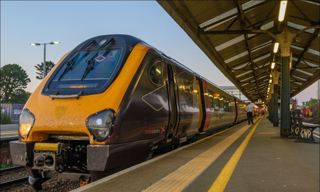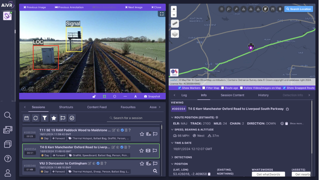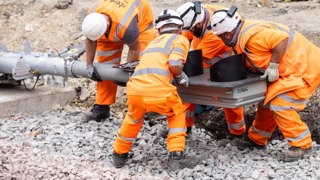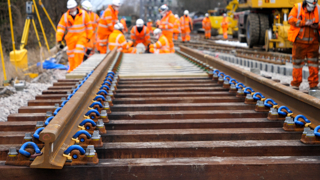In the build-up to July’s General Election, we consulted closely with the industry to devise a seven-point manifesto to create a sound base for Britain’s railways. Howard Johnston assesses the progress with point 1: Great British Railways…
In this article:
In the build-up to July’s General Election, we consulted closely with the industry to devise a seven-point manifesto to create a sound base for Britain’s railways. Howard Johnston assesses the progress with point 1: Great British Railways…
In this article:
- GBR reforms will take two years to begin making real changes.
- Legislation for GBR is expected in 2025, with promised improvements in rail usability and cost efficiency.
- Labour's Transport Secretary has initiated GBR, but visible changes for passengers will take more time.
It is no great surprise that the creation of Great British Railways is at the top of everyone’s list for rail reform. But we must realistically expect it to be two years before the promised changes really begin to kick in.
The King’s Speech delivered to Parliament on July 14 promised legislation early in 2025 to get the ball rolling. Our railways, says the government, will be easier and better to use, cost the taxpayer less, be better at supporting local and national ambitions, and be simpler to do business with.

But if it’s that easy, why has it already been 40 months since the creation of GBR was announced by the former Conservative government? It seemed to make complete sense then, so why has it taken so long to get it off the ground?
The September 4 announcement by new Labour Transport Secretary Louise Haigh that GBR is now off the starting blocks (initially in shadow form) is welcome news,
While former Transport Secretaries Grant Shapps and Mark Harper sat on the fence, at least their successor has taken a step forward within 12 weeks of taking office.
Although nothing will happen for a while. While the cumbersomely worded Passenger Railway Services (Public Ownership) Bill grinds its way through Parliament, Haigh has admitted: “We can achieve change on how organisations work together quickly, but change on the ground will take time.”
How much can Labour achieve during its five years (and perhaps more) in office? In the short term, the biggest alteration that passengers might witness is some window dressing, such as the return to a national identity with the universal use of a revised 1964 double-arrow logo, and a reduction in the number of train liveries.
Labour’s poor record
Haigh has not, of course, expressed any remorse for the fact that previous Labour administrations did little to change anything between 1997 and 2010, except to say: “Our railways are fragmented and have been for decades, suffering from a short-sighted investment approach.”
She also said: “Delivering change for passengers will rely on building new levels of trust, openness and transparency across the industry… enabling us to create a modern and affordable railway.”
The devil will be in the detail, and Labour will need to reconcile the interests of what Haigh describes as “national and regional governments, mayors, trade unions, train operators, passenger and freight representative groups, the supply chain, the regulator, and railway staff” to deliver improvements.
In the meantime, the new Shadow Great British Railways can begin the transformation process.
What we don’t know yet is how much money overall the government is intending to invest in the railway network.
Its record has been patchy, and it is well documented that Labour starved British Railways of support when it was created in post-war 1948, because other nationalised concerns were considered to be a greater priority.
Following this Labour tradition, there is no talk today about ‘new’ money, other than Haigh has claimed that £150 million (a relatively modest sum) will be saved annually by withdrawing fees paid to private passenger operators.
This cash will “create a stronger, more reliable rail network that works for everyone”, she pledges.
Analysts will ask how much will be needed to both set up GBR and pay off contracts.
Highs and lows of privatisation
When the independent Williams-Shapps Plan for Rail was published in May 2021, just as COVID-19 was ebbing, Keith Williams said: “We should not romanticise the nationalised era.”
He pointed out that 21,000 more passenger services ran on the average day compared with the days of British Rail (an increase of a third), and that the overall patronage figure has doubled.
Government investment has quadrupled in the 30 years since the end of state control, and the private sector has invested around £1 billion a year.
Stop-start public funding, which became farcical in the 1970s and 1980s when governments kept British Rail on a dog lead, came to an end.
Dirty, unmanned stations have been cleaned up and made safe and friendly. And life-expired rolling stock has been replaced - largely with private money.
There is compensation to passengers for poor performance, and gone is the policy of leaving people stranded on stations if the last train of the evening is cancelled.
Rail freight also now has a dynamic business model, when it once seemed doomed to extinction.
What can’t be ignored, however, is that rail fares have increased by more than 50% in real terms since 1997. And most operators and some freight services were being subsidised to make them viable even before the pandemic.
Too much adversity
Labour must now prove that it will not repeat the misdemeanours of successive previous governments who attempted piecemeal post-privatisation change, causing complex and adversarial relationships to develop between Network Rail, operators and suppliers, with the creation of documents running to thousands of pages, and the employment of almost 400 NR staff to argue over whose fault it is that trains run late.
The cities of Oxford, Sheffield and Swansea are still without the electric services they expected over ten years ago.
The unwired steel masts and gantries in the Bath area and west of Cardiff are evidence of the curtailment of the Great Western electrification programme, after disconnected decision-making pushed up the cost from £800m to an unaffordable £2.8 billion.
This month’s Shadow GBR announcement instructs three current organisations - Network Rail, the Department for Transport, and DfT Holdings Ltd - to work together to unite track and train services for passengers and freight users, ahead of creating a new Passenger Standards Authority to independently monitor and improve performance.
This is also where it is claimed that ticketing reform will come in, with a window also for Open Access passenger operators to drive competition.
If it starts to come together in 2025 as is hoped, it will be seven years since Williams was hired to conduct his root and branch review of Britain’s railways, after the bedlam caused by the chaotic May 2018 timetable change that exposed wholesale weaknesses and seriously damaged public confidence.
Now, it will be interesting to learn if (or how many of) the major railway investment projects survive HM Treasury’s feared cuts in capital spending, to fulfil Prime Minister Sir Keir Starmer’s consistent claim that he has inherited a £22bn black hole in our national finances.
Under the Shadow GBR, it will be interesting to see how the government resolves the current mismatch whereby the DfT is responsible for spending money, but HM Treasury pockets the cash from train operators.
Opportunities abound
Concerns have previously been expressed in RAIL that a clear distinction must still be made between the engineering-led infrastructure maintenance and renewals side of the industry that NR has championed, and the business of providing a quality service for the customer.
That lack of clarity had disastrous consequences in the fatal accidents on the East Coast Main Line at Hatfield (2000) and Potters Bar (2002).
Looking forward positively, there are tremendous ancillary revenue opportunities - for example, in the development of stations as shopping centres, and bringing other rail facilities closer to the heart of the community.
Login to continue reading
Or register with RAIL to keep up-to-date with the latest news, insight and opinion.
















brianrm - 27/11/2024 20:42
Keith Williams said: “We should not romanticise the nationalised era., apart from the fact British Rail worked miracles on what little money it had. And the cost base was far far lower than now.